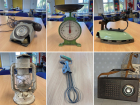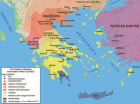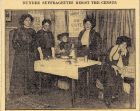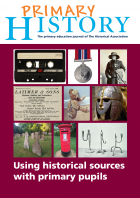Using Sources
It is important to use a wide range of sources such as pictures, artefacts, music and sights. Children will use these to build up their enquiry thought and processes and to build up their understanding of past.
Sort by:
Date (Newest first) | Title A-Z
Show:
All |
Articles |
Podcasts |
Multipage Articles
-

Using inventories in Key Stage 2 history
ArticleClick to view -

What’s important about...? Sources and evidence
ArticleClick to view -

Using some more unusual sources in the primary classroom
ArticleClick to view -

Significant anniversaries: the infamous Beeching Report 1963
ArticleClick to view -

What’s in your pocket, Peg?
ArticleClick to view -

Using oral history in the classroom
Multipage ArticleClick to view -

Artefacts in the neighbourhood
ArticleClick to view -

School war memorials as the subject for enquiry-based learning
ArticleClick to view -

Back to basics: using maps in primary history
ArticleClick to view -

How museum collections make ancient Egypt, and the people who lived there, real
ArticleClick to view -

What’s in a road? Local history at Early Years and Key Stage 1
ArticleClick to view -

Exploring the past through active enquiry
ArticleClick to view -

Think like an archaeologist!
ArticleClick to view -

The Great Exhibition of 1851: teaching a significant event at Key Stage 1
ArticleClick to view -

How an atlas and a very old map can help us make sense of the ancient Greeks
ArticleClick to view -

Ten texts for the Platinum Jubilee
ArticleClick to view -

Back to basics: using artefacts in the classroom
ArticleClick to view -

How can we make effective use of the census in the primary history classroom?
ArticleClick to view -

Teaching primary history through concepts
ArticleClick to view -

Primary History summer resource 2021: Using historical sources
ArticleClick to view

